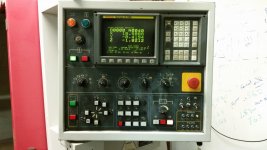So amongst other things, an important first concept imo is learning how the Z-height and tool offsets work is a very key thing. Like when you setup new tools (not sure if you have a set of tool holders and tools that came with the machine?) You sort of have to understand the "Z math" of the machine and develop your own procedure to set new tools. I use an edge technology setter that I really like. I just got myself a Haimer Taster for being such a good boy all year long (lol) and it has earned its keep in less than 2 jobs.
I use mostly always G90, I once crashed while doing MDI at super low speeds, but I commanded a Z-negative move in G91 which was about 5" under the vise ....alarmed out for servo current limt but not going fast enough to screw anything up. So the difference between those is important. Its soldered into my brain now

G1 is pretty easy, learning the sign conventions for the I and J in G2 and G3 takes a few minutes to get used to.
Next up is learning about the fixture offsets for the various vise(s) you will be using.
I'd start with regular milling cutters, then add a drill bit, then add a tap, maybe an engraving cutter/tiny ball endmill for some engraving practice. Each of those has their own quirks and parameters that will "add" on to other things you already learned.
But, I'd suggest making a few things around the shop with it, at first it will seem cumbersome because it will seem like you could have had this job done long ago at a manual machine. But keep at it, learning gets better and better with every job, get into a parts run is where your mill will shine.







